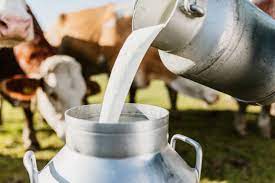The Exploration of Challenges and Opportunities of Cattle Milk Production and Marketing: The Case of Aysaita District in Afar Regional State, Ethiopia
Abstract
This study was conducted to explore the challenges and opportunities of cattle milk production and marketing in the case of the Aysaita district in the Afar National Regional State. The study was undertaken in the two purposely selected rural kebeles of the Aysaita district namely Berga and Kerbuda kebeles. Agro-pastoralists from each rural kebeles were selected using the Proportional Probability to Size (PPS) approach for each rural kebeles. A total of 120 Agro-pastoralists were selected based on the number of households in each rural kebeles. To capture gender effects in the overall production system, the sampled households in each rural kebele were stratified into female and male-headed households, which guided the determination of the number of Agro-pastoralists, using the PPS (Proportional Probability to Size) approach. For the market study, one major milk market site was purposively selected namely, the Aysaita town market based on the accessibility. The overall mean market values of cattle milk and milk product sale in dry and wet seasons were fresh cow milk per litter in dry and wet seasons were 30 Birr and 40 birrs respectively. From the study, it was noted that the existing milk production systems were affected by many constraints. There are different challenges or constraints faced in cattle milk production in the study area. These include shortage of feed, inadequate access to veterinary drugs and services, access, inadequate extension service, lack of knowledge and skills, and unavailability of credit. Marketing of milk in the study area was mainly a traditional type and women traditionally do Milk marketing. Key actors involved in the milk market chain are the producer, trader, and consumer, and fresh milk is distributed through informal and formal marketing systems. The informal market involves the direct delivery of fresh milk by producers to consumers. The contribution of milk production and marketing in the study area depends on the certain supply of accompanying inputs such as feed, veterinary services, and improved milk-marketing facilities. Based on the present study, these areas need to be explored if cattle milk production is to develop into a market-oriented business operation.
Downloads
References
Ahmed M., Ehui S. and Yemesrach Assefa, (2003). Milk development in Ethiopia. Socioeconomics and policy research. Working paper 58. ILRI (International Livestock Research Institute), Nairobi, Kenya. 47p. Available from: https://cgspace.cgiar.org/bitstream/handle/10568/2921/wp58.pdf?sequence=1.
Ahmed MAM, Ehui S and Yemesrach Assefa (2003). Dairy development in Ethiopia. Paper presented at the ‘Successes in African agriculture’ conference In: WEnt, IFPRI, NEPAD, CTA conference paper no. 6. 1–3 December 2003, Pretoria, South Africa.
Asaminew T, Eyassu S. Smallholder dairy production system and emergence of dairy cooperatives in Bahir Dar Zuria and Mecha Woredas, Northwestern Ethiopia. World Journal of Dairy and Food Sciences. 2009; 4: 185-192.
Asaminew Tassew and Eyassu Seifu, (2009). Smallholder Dairy Production System and
Emergence Of Dairy Cooperatives In Bahir Dar Zuria And Mecha Woredas, Northwestern Ethiopia. World Journal Of Dairy & Food Sciences 4 (2): 185-192, 2009. Andassa Livestock Research Center, Bahir Dar, Ethiopia. Available from: https://www.semanticscholar.org/paper/Smallholder-Dairy-Production-System-and-Emergence-Tassew-Seifu/51bcc91081b97c401a14eb209da9ac6568499ab0.
Azage Tegegne, (2003). Financing market oriented dairy development: the case of Ada’a-
Liben district Dairy Association, Ethiopia. Urban Agricultural Magazine. No. 9. Koninklijke, Netherlands. Available from: https://cgspace.cgiar.org/handle/10568/29818.
Azage Tegegne, Berhanu Gebremedhin, Dirk Hoekstra, Berhanu Belay And Yoseph
Mekasha, (2013). Smallholder Dairy Production and Marketing Systems in Ethiopia: IPMS Experiences and Opportunities for Market-Oriented Development. International Livestock Research Institute (ILRI), Addis Ababa, Ethiopia. Working Paper No. 31. Available from: https://cgspace.cgiar.org/handle/10568/27914.
Azage Tegegne. (2003). Financing market-oriented dairy development. The case of Ada’a-Liben Woreda Dairy Association. Urban Agriculture Magazine (the Netherlands) 9:25–27.
CSA (Central Statical Agency) (2012). Ethiopia Sample survey Enumeration. Addis Ababa Ethiopia.
CSA 2011. Agricultural Sample Survey 2010/11: Report on Livestock and Livestock Characteristics. Vol11. (Private peasant holdings). Addis Ababa, Ethiopia: Central Statistical Agency.
IPS (Industrial Project Service) (2002) Resource Potential Assessments and Project Identification Study of Somali Region. Agricultural Resources. Industrial Projects Service. Addis Ababa, 401 p. Available from: https://www.scirp.org/(S(czeh2tfqw2orz553k1w0r45))/reference/referencespapers.aspx?referenceid=2596599.
Kedija HH. (2008). Characterization of milk production system and opportunity for market orientation: A case study of Mieso district, Oromia region, Ethiopia. Msc thesis, Haramaya University, Ethiopia.
Keralem Ejigu, (2005). Honeybee production systems, opportunities and challenges in enebse
Esarmidir wereda (Amhara region) and Amaro Special Wereda (Southern Nations,
Nationalities and Peoples Region), Ethiopia. M.Sc. Thesis, Alemaya University, Ethiopia.
Mohammed, H., Nigusie, A., Patrick, E. (2016). Cattle and Camel Milk Production and Marketing: The Case Study in Aysaita Woreda, Awsi Rasu of Afar Regional State, Ethiopia. Journal of Marketing and Consumer, ISSN 2422-8451 An International Peer-reviewed Journal Vol.22. pp:7-24. Available from:
https://iiste.org/Journals/index.php/JMCR/article/view/30154/30970.
Nardos Eshetu, (2010). Determinants, challenges and prospects of dairy production and marketing in mekele city, MA Thesis Mekele University, Ethiopia.
PASDEP (Plan for Accelerated and Sustained Development to End Poverty) 2010. Ethiopia’s Agricultural Sectoral Policy and Investment Framework. Federal Democratic Republic of Ethiopia, Ministry of Agriculture and Rural Development, Draft Final Report. Addis Ababa, Ethiopia.
Solomon, M. (2014). Exploration of Challenges and Prospects of Dairy Production: A survey study of Mekelle City, Ethiopia. MSc Thesis Mekelle University, Ethiopia. https://opendocs.ids.ac.uk/opendocs/handle/20.500.12413/4536.
Tegegne, A. and D. Hoekstra 2011. Mass artificial insemination interventions to enhance dairy and beef production in Ethiopia. Paper presented at a ‘Livestock Exchange,’ 9 -10 November 2011, ILRI, Addis Ababa, Ethiopia.
Tegegne, A., Gebremedhin, B., Hoekstra, D., Belay, B. and Mekasha, Y. (2013). Smallholder dairy production and marketing systems in Ethiopia: IPMS experiences and opportunities for market-oriented development. IPMS (Improving Productivity and Market Success) of Ethiopian Farmers Project Working Paper 31. Nairobi: ILRI.
Woldemichael Somano, (2008). Milk Marketing Chains Analysis: The Case of Shashemane, Hawassa and Dale District’s Milk Shed, Southern Ethiopia. M.Sc. Thesis, Hawassa University, Ethiopia. Available from: https://cgspace.cgiar.org/handle/10568/713.

Copyright (c) 2023 Yohannes Birahanu, Mohammed Endris Seid, Woldegebriel Tesfamariam

This work is licensed under a Creative Commons Attribution-NonCommercial-NoDerivatives 4.0 International License.










